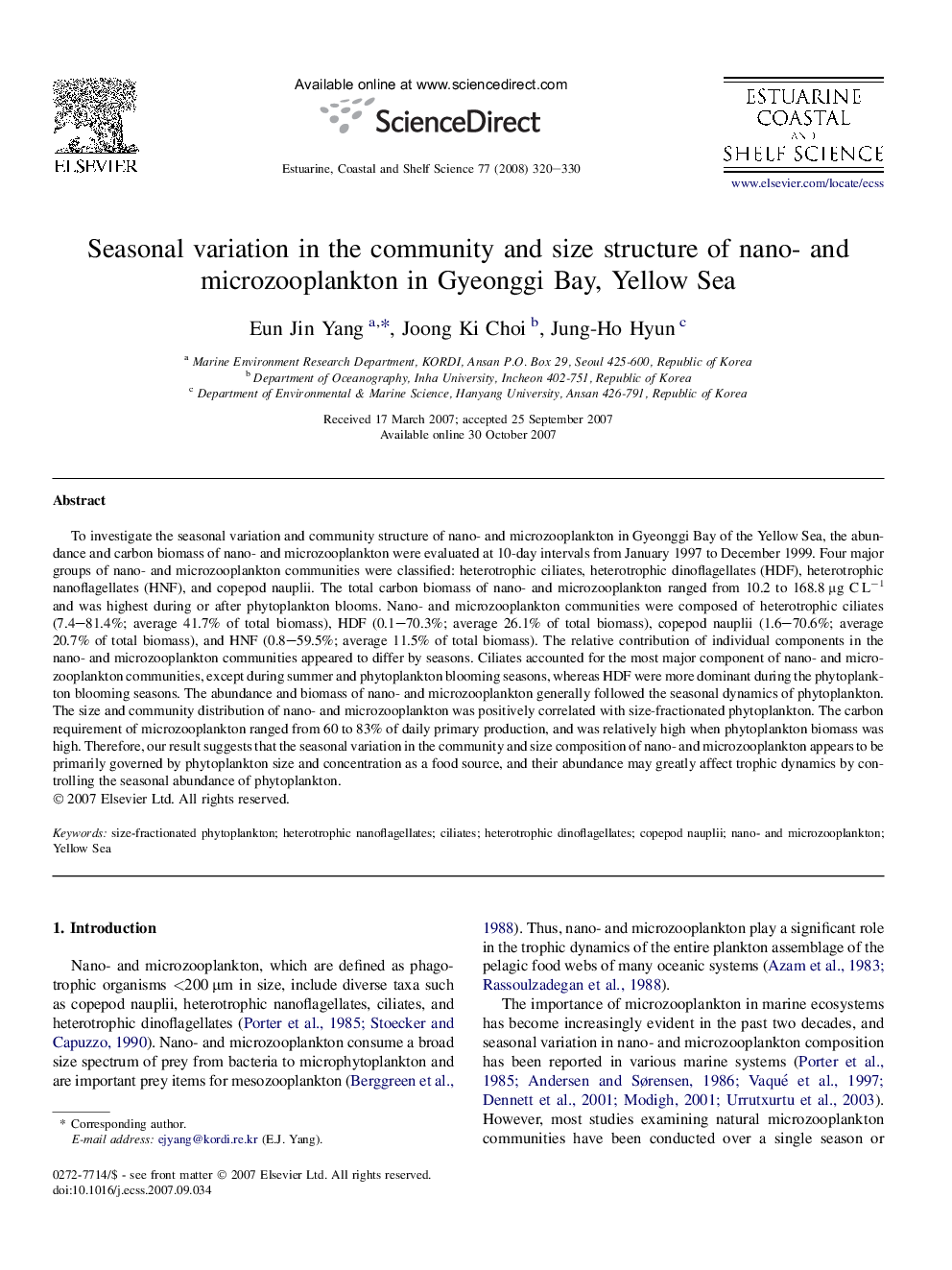| کد مقاله | کد نشریه | سال انتشار | مقاله انگلیسی | نسخه تمام متن |
|---|---|---|---|---|
| 4541657 | 1326734 | 2008 | 11 صفحه PDF | دانلود رایگان |

To investigate the seasonal variation and community structure of nano- and microzooplankton in Gyeonggi Bay of the Yellow Sea, the abundance and carbon biomass of nano- and microzooplankton were evaluated at 10-day intervals from January 1997 to December 1999. Four major groups of nano- and microzooplankton communities were classified: heterotrophic ciliates, heterotrophic dinoflagellates (HDF), heterotrophic nanoflagellates (HNF), and copepod nauplii. The total carbon biomass of nano- and microzooplankton ranged from 10.2 to 168.8 μg C L−1 and was highest during or after phytoplankton blooms. Nano- and microzooplankton communities were composed of heterotrophic ciliates (7.4–81.4%; average 41.7% of total biomass), HDF (0.1–70.3%; average 26.1% of total biomass), copepod nauplii (1.6–70.6%; average 20.7% of total biomass), and HNF (0.8–59.5%; average 11.5% of total biomass). The relative contribution of individual components in the nano- and microzooplankton communities appeared to differ by seasons. Ciliates accounted for the most major component of nano- and microzooplankton communities, except during summer and phytoplankton blooming seasons, whereas HDF were more dominant during the phytoplankton blooming seasons. The abundance and biomass of nano- and microzooplankton generally followed the seasonal dynamics of phytoplankton. The size and community distribution of nano- and microzooplankton was positively correlated with size-fractionated phytoplankton. The carbon requirement of microzooplankton ranged from 60 to 83% of daily primary production, and was relatively high when phytoplankton biomass was high. Therefore, our result suggests that the seasonal variation in the community and size composition of nano- and microzooplankton appears to be primarily governed by phytoplankton size and concentration as a food source, and their abundance may greatly affect trophic dynamics by controlling the seasonal abundance of phytoplankton.
Journal: Estuarine, Coastal and Shelf Science - Volume 77, Issue 3, 20 April 2008, Pages 320–330